The Pre-Broadcast Era
Much of the early development that led to broadcasting was done by the Special Land Station operators and many of the earliest broadcasters came out of the ranks of those licensees. That was true around the country and in Houston.
There were no Special Amateur licensees in Houston prior to World War I and only seven in all of Texas but after the resumption of civilian use of wireless after the war, beginning in August of 1919, several individuals in Houston and the surrounding area were issued Special Amateur licenses.
Clifford W. Vick of 1918 Smith St. had 5ZO and Ingraham S. Roberts III had 5ZT, both issued in January of 1920. Hallet S. Worthington had 5ZV and James L. Autrey, Jr., of # 5 Courtlandt Place had 5ZX, both issued in March, 1920. B.J. Still had 5ZC (later changed to 5ZE), issued in September, 1920. Alfred P. Daniel of 2504 Bagby had 5ZX, issued in December, 1921, the month the government created the Broadcast class of license. Francis M. Austin had 5ZAA and Donald Harper Graham of Juliff, Texas, 5ZW, issued in March, 1921. Arthur H. Holt of Kountze, Texas, had 5ZAJ, issued July, 1921.
In addition, Rice Institute had 5YI, a technical and training license, issued in June, 1920, and the Tel-Electric Co., wholesaler for the Radio Corporation of America, had experimental license 5XS, issued in August, 1921. There were no Special Amateur licenses issued to anyone in Galveston.
Alfred P. Daniel had a general amateur license (5AO) and served as President of the Houston Radio Club several times as well as serving as President of the Houston Saxophone Club. Hand-me-down stories credit Daniel as the first person to broadcast voice over the airwaves in Houston and the first radio program broadcast but there is no contemporary documentation of these feats and there are competing claims.
The Hurlburt-Still Electric Co., of which B. J. Still was a founding partner, had 5DL, located at the business at 1101 Capitol.

Clifford W. Vick was in charge of a big wireless exhibit at the Houston Fair and Exposition in November, 1921, sponsored by Uradia, a Houston company that manufactured batteries for cars, radios and homes, using the slogan ‘Liquid Electricity.’ That exhibit demonstrated not only receiving but also sending capabilities. It was described as the most powerful radio outfit in the state at the time and picked up signals from Germany and the Catalina Islands and seems to have operated like a broadcasting station for the benefit of fair-goers. Mayor Oscar Holcombe sent out invitations to the Presidents of the US and Mexico and 1500 Southern mayors to attend the Fair. Those were sent by Morse code to powerful relay stations in Roswell, NM, and Little Rock, AR. But interest was so high, Stowers Furniture and the W.C. Munn Co., a large department store of the era, put in radiotelephone receivers in their downtown stores so their customers could experience the phenomenon. Another device demonstrated was the ‘magno box’ or ‘magno vox’ loudspeaker - it was spelled both ways in the stories.
Other members of the Houston Radio Club also had an exhibit at the fair, demonstrating home-made radio receivers and transmitters. In addition to Alfred P. Daniel and Vick, those participating included Finlay Carter, a student at Rice, Hallett Worthington, E.F. Hard and Henry Schleeter. The set-up was powered by a home made battery which developed 150 volts which Daniel had first had the idea for while attending the air service’s wireless school at the University of Texas during the War. A demonstration had been given the previous week and had been received at A&M and by several ships at sea.
The Houston Radio Club claimed 60 members and was growing at every meeting. There were several honorary members from other parts of the country including F. Clifford Estey of Salem, Massassachusetts, R.H.G. Mathews of Chicago, Ellery W. Stone of San Francisco and A. E. Bassey of Sunnyvale, California. Mathews founded the Chicago Radio Laboratory in 1918 and developed the trademark Z-Nith from the call letters of his amateur station, 9ZN. Major Edwin Armstrong licensed Chicago Radio to manufacture equipment using his patents and Z-Nith became Zenith in 1923. Mathews was also Radio Inspector for the 9th District, based in Chicago; Daniel and others may have met him while attending the big convention of the American Radio Relay League in Chicago in September of 1921.
Stone had been involved with wireless since before 1910 in the Bay Area. He worked with Dr. Lee deForest at the time he developed the vacuum tube. A company he was associated with became International Telephone and Telegraph and he rose to the position of vice president. He served in both World Wars as a communications expert and rose to the rank of Rear Admiral. He was also Radio Inspector for the 6th District, based in San Francisco.
There were also four female members of the Houston Radio Club. Mrs. Eleanor Regan took her radio equipment with her wherever she traveled and was in New Jersey for the Carpentier-Dempsey fight, the ‘Battle of the Century,’ July 2, 1921, and had radioed the results back to an audience here in Houston according to the Post article, but I have not been able to confirm this claim. The fight drew immense media attention; here is an article detailing the event.
Another local operator was teen-aged Howard Hughes, Jr., of 3921 Yoakum Blvd., who reportedly had a whole room of his house full of wireless equipment; he operated general amateur station 5CY with 500 watts, communicating with wireless operators all over the world. This is now Hughes House on the campus of the University of St. Thomas.
Of the eight broadcast licenses awarded to Houston in 1922, five of the owners came out of the above group of Special Amateur licensees. They were the pioneers of broadcasting in Houston.
The Houston Press headlined on April 6, 1922, on page 1 that ‘Houston is Wild Over Wireless.’ ‘Receiving sets (are) being gobbled up as fast as they’re made; many (are) making their own.’ The only two merchants in town carrying receivers, the Tel-Electric Co. and Hurlburt-Still, were sold out and manufacturers were weeks or months behind in deliveries. The Westinghouse factory was said to be receiving 1,000,000 orders for sets a month. The story listed a sample program for WJZ, Newark, NJ, for that evening and said that many in Houston were receiving the ‘high class eastern wireless programs every night. There are powerful broadcasting stations now operating every night at Dallas, Atlanta, Chicago, Pittsburgh, Newark, Springfield, Schenectady and other cities.’
Though someone at the Press must’ve talked to someone at Hurlburt-Still for the report, there was no mention of the fact the company had already received its license and was working to get on the air, but the stage was set for the dawn of the broadcasting era in Houston.
The above images are taken from the archives of the Houston Press and Houston Post at the Houston Public Library. I am indebted to Thomas White's Early US Radio History for the explanations of the types of licenses issued and their importance in the creation of broadcasting. This brief summary is merely the tip of the iceberg with regard to this topic and will be expanded as research warrants. The earliest I have researched is the summer of 1921 but as a hint of what's to come, take a look at this 1912 aerial depiction of the downtown Houston skyline.
In the 700 block of Main, between Rusk and Capital, note the Texas Co. building, i.e., Texaco. That structure on top of the building is not an oil derrick, that's a wireless antenna. Wireless radiotelegraphy was well suited to the needs of the burgeoning petroleum industry with operations often in remote locations, far removed from established roads or telegraph or telephone lines.




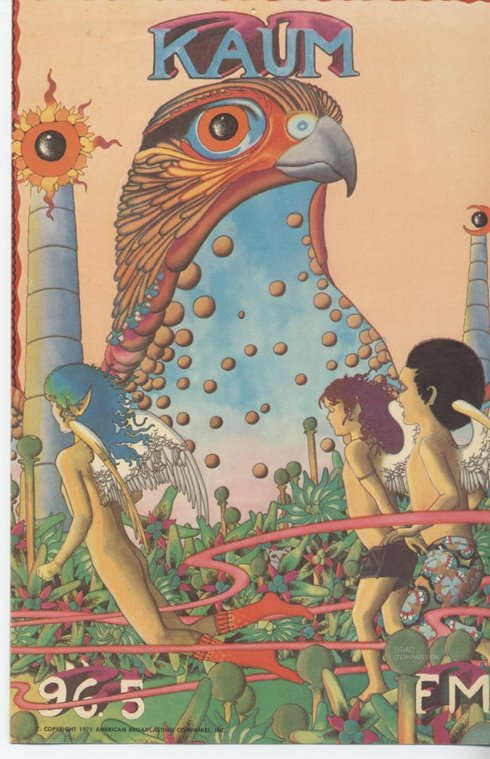
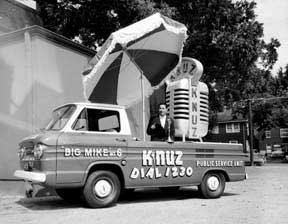


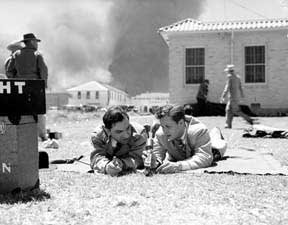
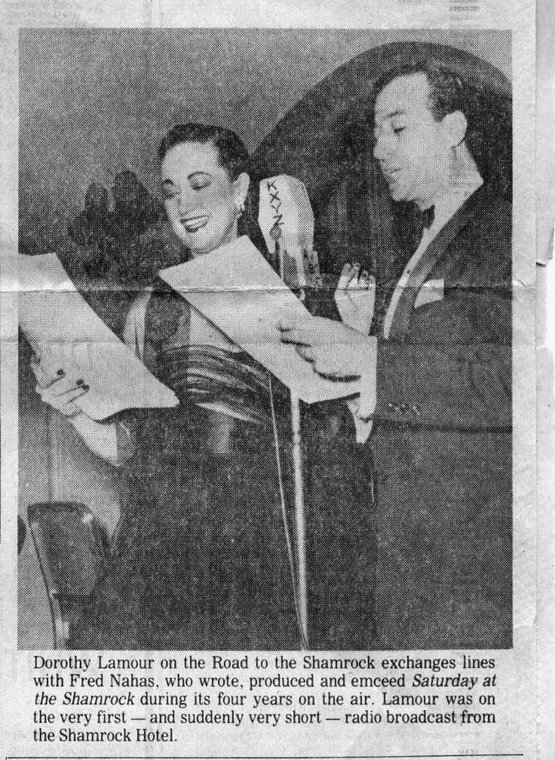
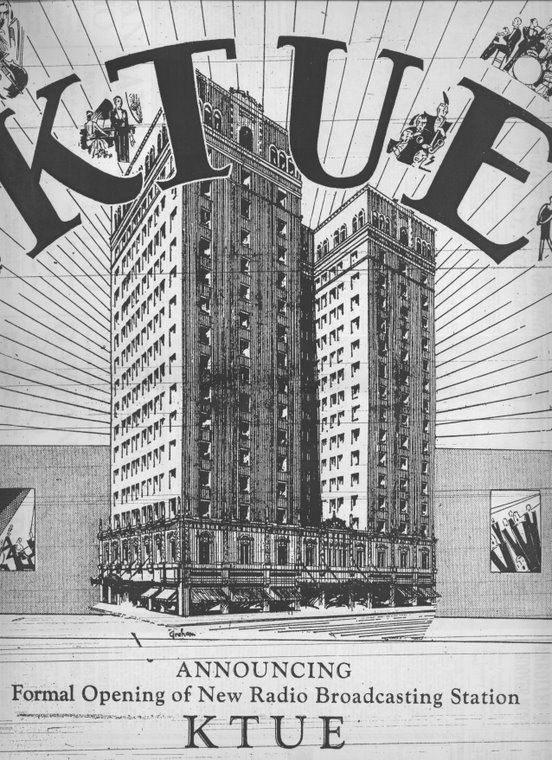
No comments:
Post a Comment